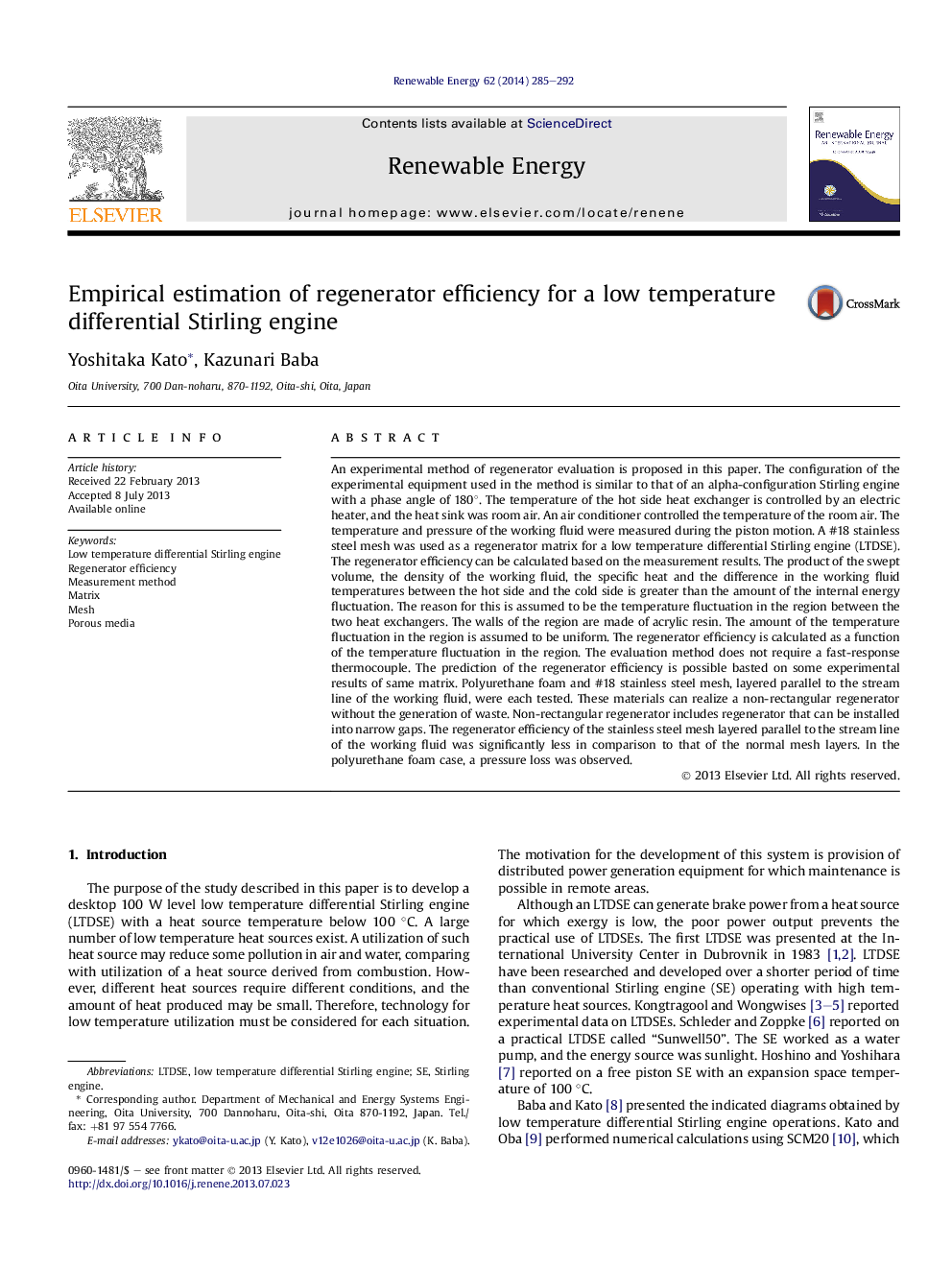| کد مقاله | کد نشریه | سال انتشار | مقاله انگلیسی | نسخه تمام متن |
|---|---|---|---|---|
| 6768867 | 512477 | 2014 | 8 صفحه PDF | دانلود رایگان |
عنوان انگلیسی مقاله ISI
Empirical estimation of regenerator efficiency for a low temperature differential Stirling engine
ترجمه فارسی عنوان
برآورد تجربی عملکرد رگرسیون برای یک موتور دیفرانسیل استریلینگ با دمای پایین
دانلود مقاله + سفارش ترجمه
دانلود مقاله ISI انگلیسی
رایگان برای ایرانیان
کلمات کلیدی
موضوعات مرتبط
مهندسی و علوم پایه
مهندسی انرژی
انرژی های تجدید پذیر، توسعه پایدار و محیط زیست
چکیده انگلیسی
An experimental method of regenerator evaluation is proposed in this paper. The configuration of the experimental equipment used in the method is similar to that of an alpha-configuration Stirling engine with a phase angle of 180°. The temperature of the hot side heat exchanger is controlled by an electric heater, and the heat sink was room air. An air conditioner controlled the temperature of the room air. The temperature and pressure of the working fluid were measured during the piston motion. A #18 stainless steel mesh was used as a regenerator matrix for a low temperature differential Stirling engine (LTDSE). The regenerator efficiency can be calculated based on the measurement results. The product of the swept volume, the density of the working fluid, the specific heat and the difference in the working fluid temperatures between the hot side and the cold side is greater than the amount of the internal energy fluctuation. The reason for this is assumed to be the temperature fluctuation in the region between the two heat exchangers. The walls of the region are made of acrylic resin. The amount of the temperature fluctuation in the region is assumed to be uniform. The regenerator efficiency is calculated as a function of the temperature fluctuation in the region. The evaluation method does not require a fast-response thermocouple. The prediction of the regenerator efficiency is possible basted on some experimental results of same matrix. Polyurethane foam and #18 stainless steel mesh, layered parallel to the stream line of the working fluid, were each tested. These materials can realize a non-rectangular regenerator without the generation of waste. Non-rectangular regenerator includes regenerator that can be installed into narrow gaps. The regenerator efficiency of the stainless steel mesh layered parallel to the stream line of the working fluid was significantly less in comparison to that of the normal mesh layers. In the polyurethane foam case, a pressure loss was observed.
ناشر
Database: Elsevier - ScienceDirect (ساینس دایرکت)
Journal: Renewable Energy - Volume 62, February 2014, Pages 285-292
Journal: Renewable Energy - Volume 62, February 2014, Pages 285-292
نویسندگان
Yoshitaka Kato, Kazunari Baba,
